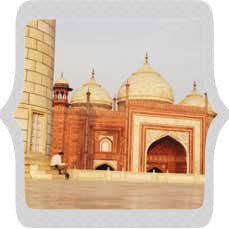Why is Taj Mahal asymmetric? Read on to know about the myth and legend of the asymmetric Taj.
Asymmetric Taj Mahal Myth
 |
While the cenotaph of Mumtaz Mahal sits perfectly at the centre of the chamber, it is the cenotaph of Shah Jahan, which appears to be squeezed in rather than planned and is also a little higher than the cenotaph of her wife. It is this asymmetry from where the myth or legend of asymmetrical Taj originates. There are two versions of the story that somehow seem to combine together at the end, but as there is no hard evidence to suggest the surety of either, both of them prevail and the legend goes on. According to the first one, Shah Jahan's son Aurangzeb was a devout Muslim, and since the holy book of Quran forbids any kind of ostentation at the time of death, he didn't approve of his father's wish to build Taj in the first place. For this reason, some theorists believe that the cenotaph of Shah Jahan was placed by his son Aurangzeb, without caring much about the symmetry.
Another section of theorists believe that the cenotaph of Shah Jahan was never meant to be placed alongside the cenotaph of his wife as it would have disrupted the whole symmetry of the central and the burial chamber. Rather, they believe that Shah Jahan meant to construct another Taj Mahal, in black, on the opposite side of the river, where the Mehtab garden currently exists. The claims are due to the reason that Mehtab garden, more than a garden, bears a look of an abandoned plan as remains of black marble have been found. And since Shah Jahan, in the last years of his life was deposed by Aurangzeb and was put under house arrest, the plan to build another Taj couldn't proceed. And after Shah Jahan's death, Aurangzeb, haphazardly buried his him alongside his Mumtaz's cenotaph, thereby ruining the otherwise perfect symmetry of the Taj Mahal.